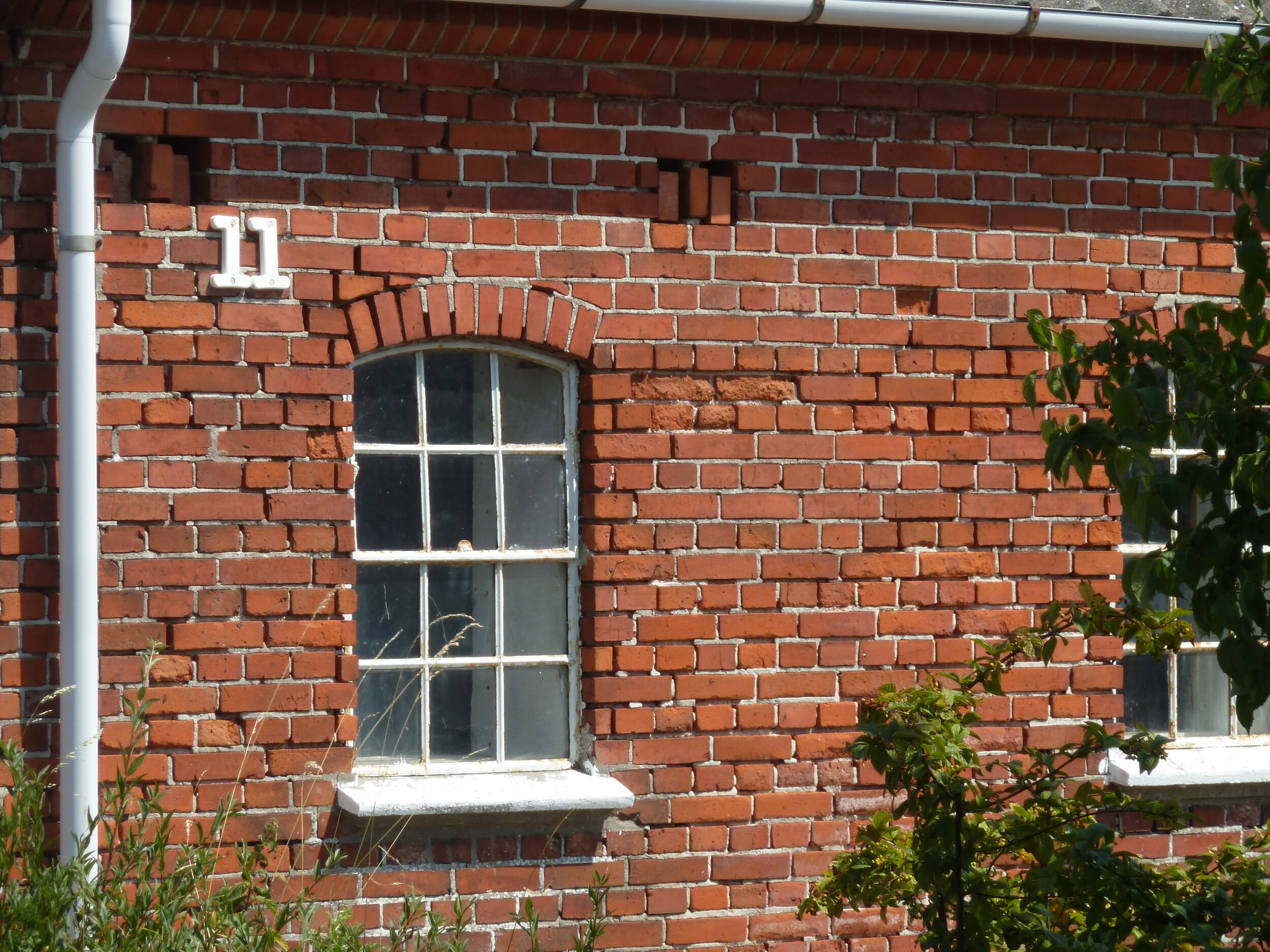
Typical damages / Frost damage
Frost damage
Frost damage in porous building materials can originate from a variety of physical frost impacts, of which the volume increase of the water-to-ice phase change is the most widely known. Such frost damage is mainly manifested through scaling of the outer surfaces e.g in ceramic bricks and natural stones.
What to look for
Scaling of outer surfaces in bricks means that typically the outer 5-15 mm of the surface is peeled off in single stones or larger areas. This can be in moist areas but also apparently random on facades. Single stones with frost damage indicate that at least these stones are more sensitive than the rest of the stones. A visual inspection of the existing facade may reveal evidence of frost damage from the past, which logically is an indicator of potential future frost damage. In these cases, the application of internal insulation should not be discommended.
Risks
Frost damage is commonly solely related to aesthetical problems, particularly scaling of the exterior surface of the masonry wall, which normally do not lead to structural problems except for very extreme cases. Given more frequent and intense freezing conditions though, which penetrate deeper into the wall, the risk for structural damage may rise when adding internal insulation, if the material is very sensitive to frost damage.
Why it occurs
Porous building materials experiencing high moisture contents and low frost temperatures are at risk for frost damage. If pores in the material are filled with water that freezes and therefore expands, scaling of the outer surface may appear. However, some materials are more frost resistant than others, which depends strongly on the porosity and strength of the material.
Three conditions must be fulfilled for frost damage to occur:
The material must be sufficiently wet
The temperature must be sufficiently low, so that water in the material can freeze
The material must be sensitive to frost damage. Read more about frost sensitive parts.
Where to look for risks
The outer surface layers of historic masonry walls, including plinths, corners, are normally exposed to the highest risk for frost damage.
In porous building materials, both moisture and temperature levels depend on the wall orientation. The prevailing direction for wind-driven rain in Europe is South-West while the lowest facade temperatures occur in North-faced facades. It is subsequently difficult to predict which is the most exposed orientation with respect to frost damage. Areas close to the ground may also be at high risk, as rising damp may cause high moisture contents in this area.
What to do
If the material is wet because of leakage in pipes or rising damp, these moisture sources must be remedied. If there is no extraordinary moisture source, the material may be too sensitive for its use, and internal insulation will increase the risk of further frost damage. Evaluating the frost sensitivity of the existing material is a job for experts; it requires an extensive experimental effort, wherein a large number of material samples has to be available.











